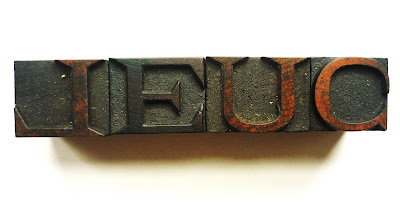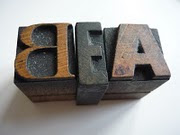I have been collecting wooden type blocks for as long as I can remember. Not with any specific project in mind, I just liked the look and feel, and the history of them. Now it might sound like I have gathered up a huge stash of them over the years, which is very far from the truth. Norway is a small country with a limited printing history, and there has never been a lot of them around. So I have bought the odd block whenever I have happened upon one, and as a result have a small, very mixed bag of type of different fonts and sizes.
Lately I have been thinking about maybe getting a table-top press, so that I can finally get to use them for what they were intended. And then things like size and font suddenly matters.
There are some great resources online for helping you identify fonts, for instance Identifont and Linotype, which work in very similar ways. There you can choose what letters to use for identification, and they make you look at typical identifying features, which can be a great way to learn about fonts. Another online resource is WhatTheFont, where you can upload examples or pictures of your mystery font and it will help you identify it. In general I find that wood type can be a bit tricky to identify. It might be because sites like these are mainly aimed at digital and more modern fonts. And a lot of these old wooden ones might not be completely accurate, or part of what is an 'official' font.
So these might be Franklin Gothic, or Helvetica ..?
..and these look like they could be Century Schoolbook ..?

Latin Wide?
..?






No comments:
Post a Comment